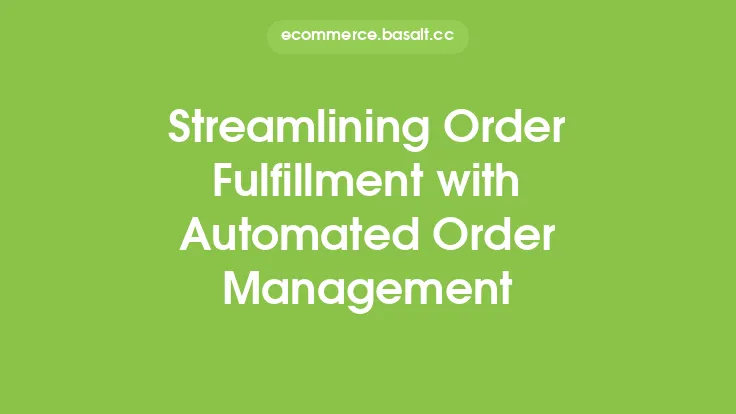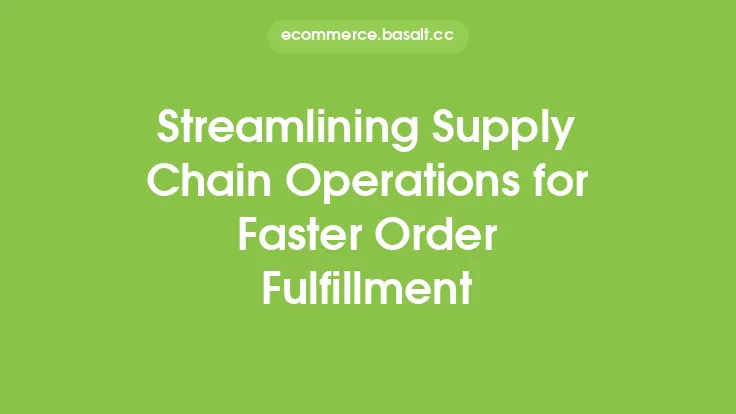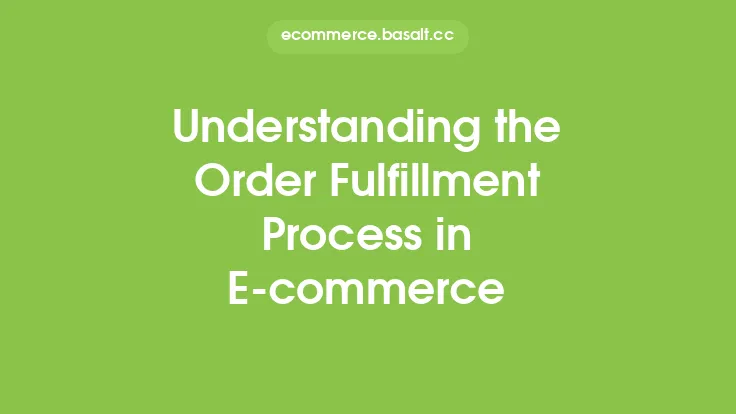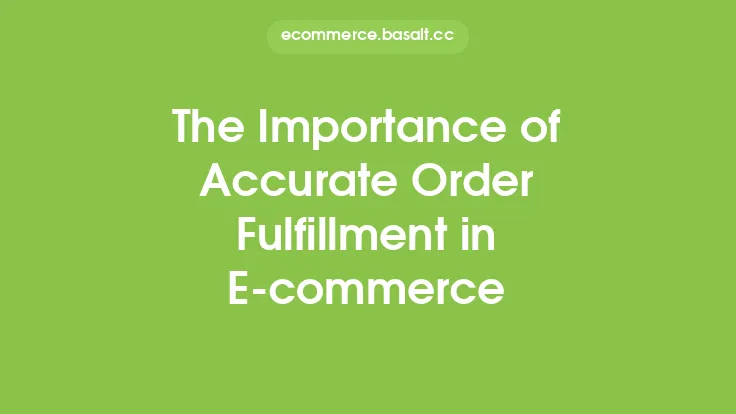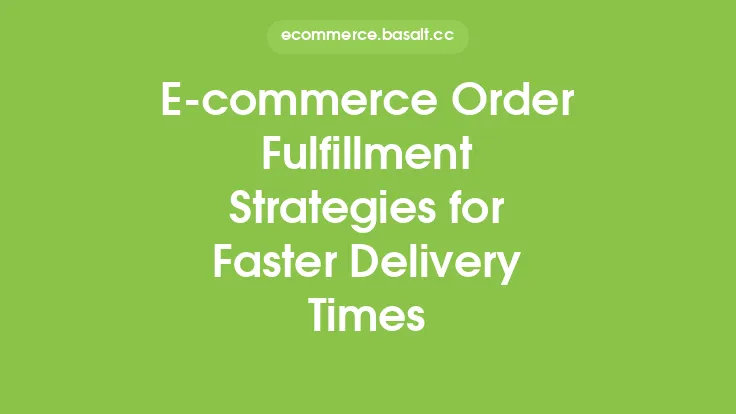The e-commerce industry has experienced rapid growth over the past decade, with more and more businesses shifting their operations online. As a result, order fulfillment has become a critical component of e-commerce success. With the increasing demand for fast and efficient shipping, businesses are looking for ways to streamline their order fulfillment processes. One effective way to achieve this is by implementing automated systems. Automated order fulfillment systems use technology to automate various tasks, such as inventory management, order processing, and shipping, to improve efficiency, reduce errors, and increase customer satisfaction.
Introduction to Automated Order Fulfillment Systems
Automated order fulfillment systems are designed to simplify and accelerate the order fulfillment process. These systems use a combination of software and hardware to automate tasks, such as scanning, sorting, and packaging, to reduce manual labor and increase productivity. Automated systems can be integrated with existing e-commerce platforms, inventory management systems, and shipping carriers to create a seamless and efficient order fulfillment process. By automating tasks, businesses can reduce the risk of human error, improve order accuracy, and increase customer satisfaction.
Benefits of Automated Order Fulfillment Systems
The benefits of automated order fulfillment systems are numerous. One of the primary advantages is increased efficiency. Automated systems can process orders much faster than manual systems, which enables businesses to fulfill orders quickly and meet customer expectations. Another benefit is improved accuracy. Automated systems can reduce errors, such as incorrect orders, missing items, and incorrect shipping addresses, which can lead to customer dissatisfaction and costly returns. Additionally, automated systems can provide real-time tracking and updates, which enables businesses to monitor the status of orders and make adjustments as needed.
Key Components of Automated Order Fulfillment Systems
Automated order fulfillment systems typically consist of several key components, including inventory management software, order management software, and automated packaging and shipping systems. Inventory management software is used to track inventory levels, monitor stockroom activity, and optimize inventory replenishment. Order management software is used to process orders, manage order status, and communicate with customers. Automated packaging and shipping systems use machines to package and ship orders, which can reduce labor costs and improve shipping efficiency.
Implementing Automated Order Fulfillment Systems
Implementing automated order fulfillment systems requires careful planning and execution. Businesses should start by assessing their current order fulfillment processes and identifying areas for improvement. Next, they should research and evaluate different automated systems to determine which one best meets their needs. Once a system is selected, businesses should develop a implementation plan, which includes training staff, integrating the system with existing platforms, and testing the system to ensure it is working correctly. Finally, businesses should monitor the system's performance and make adjustments as needed to ensure it is meeting their expectations.
Best Practices for Automated Order Fulfillment Systems
To get the most out of automated order fulfillment systems, businesses should follow best practices, such as regularly maintaining and updating the system, monitoring system performance, and providing ongoing training to staff. Additionally, businesses should ensure that the system is integrated with existing platforms, such as e-commerce platforms and inventory management systems, to create a seamless and efficient order fulfillment process. Businesses should also establish clear policies and procedures for handling errors, returns, and customer complaints to ensure that customer satisfaction is maintained.
Common Challenges and Solutions
While automated order fulfillment systems can offer many benefits, they can also present challenges, such as high upfront costs, technical issues, and integration problems. To overcome these challenges, businesses should carefully plan and budget for the implementation of automated systems, ensure that they have the necessary technical expertise to support the system, and establish clear communication channels with customers and staff. Additionally, businesses should be prepared to make adjustments to the system as needed to ensure it is meeting their expectations and providing the desired benefits.
Future of Automated Order Fulfillment Systems
The future of automated order fulfillment systems is exciting and rapidly evolving. With advancements in technology, such as artificial intelligence, machine learning, and robotics, automated systems are becoming increasingly sophisticated and efficient. In the future, we can expect to see even more automation in order fulfillment, such as the use of drones and autonomous vehicles for delivery, and the integration of automated systems with emerging technologies, such as blockchain and the Internet of Things. As the e-commerce industry continues to grow and evolve, automated order fulfillment systems will play an increasingly important role in enabling businesses to meet customer expectations and stay competitive.
